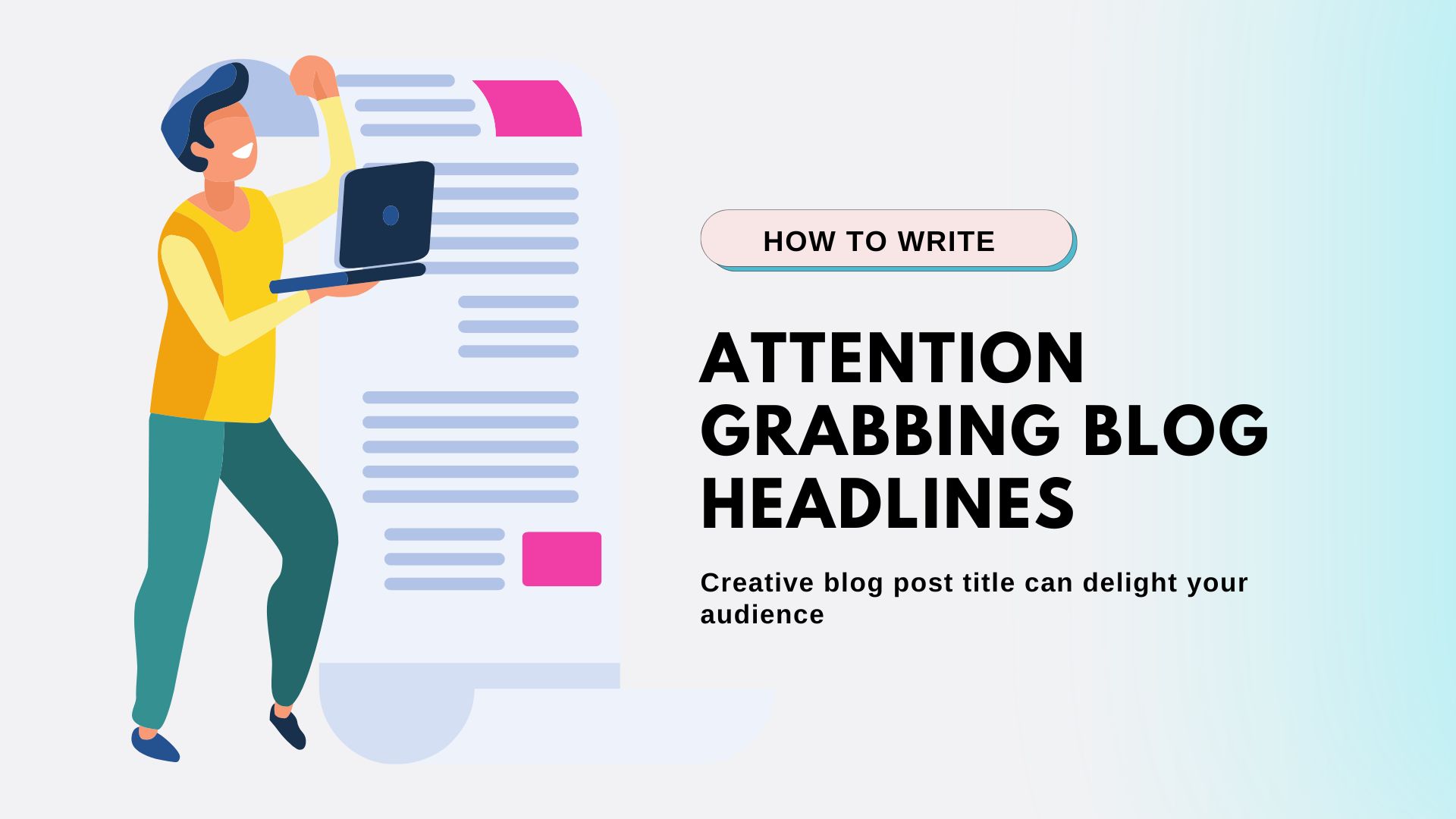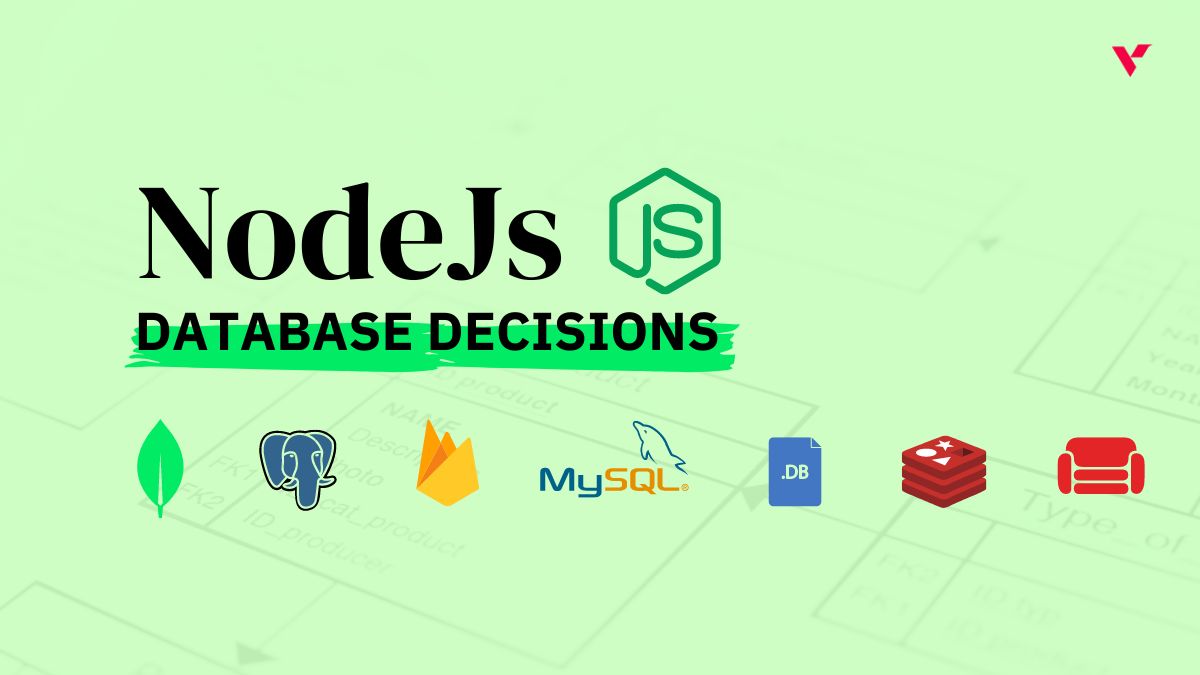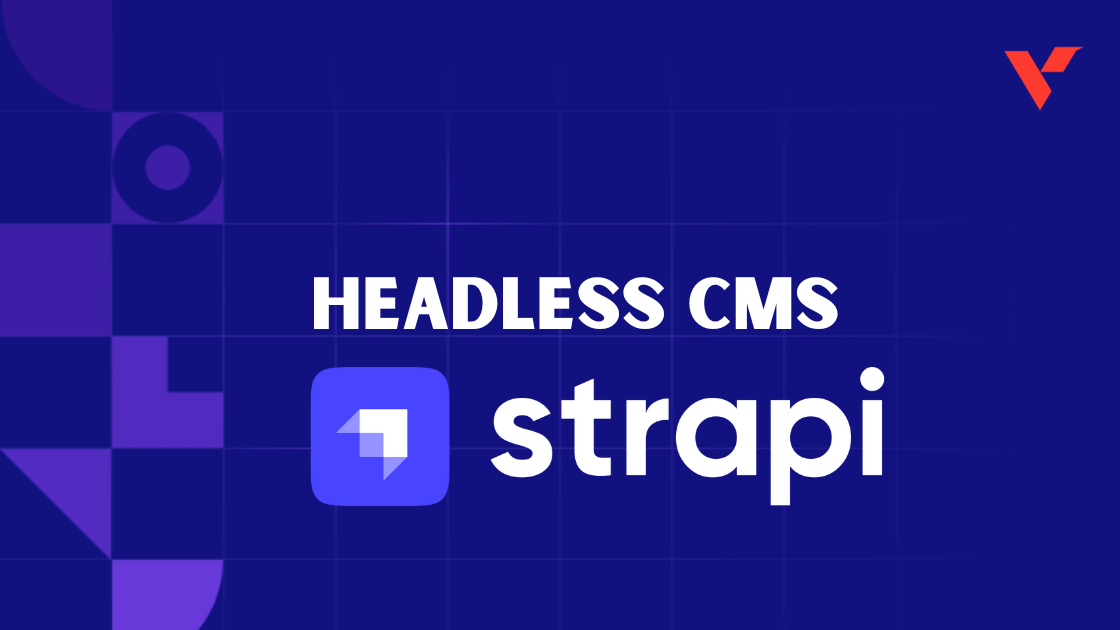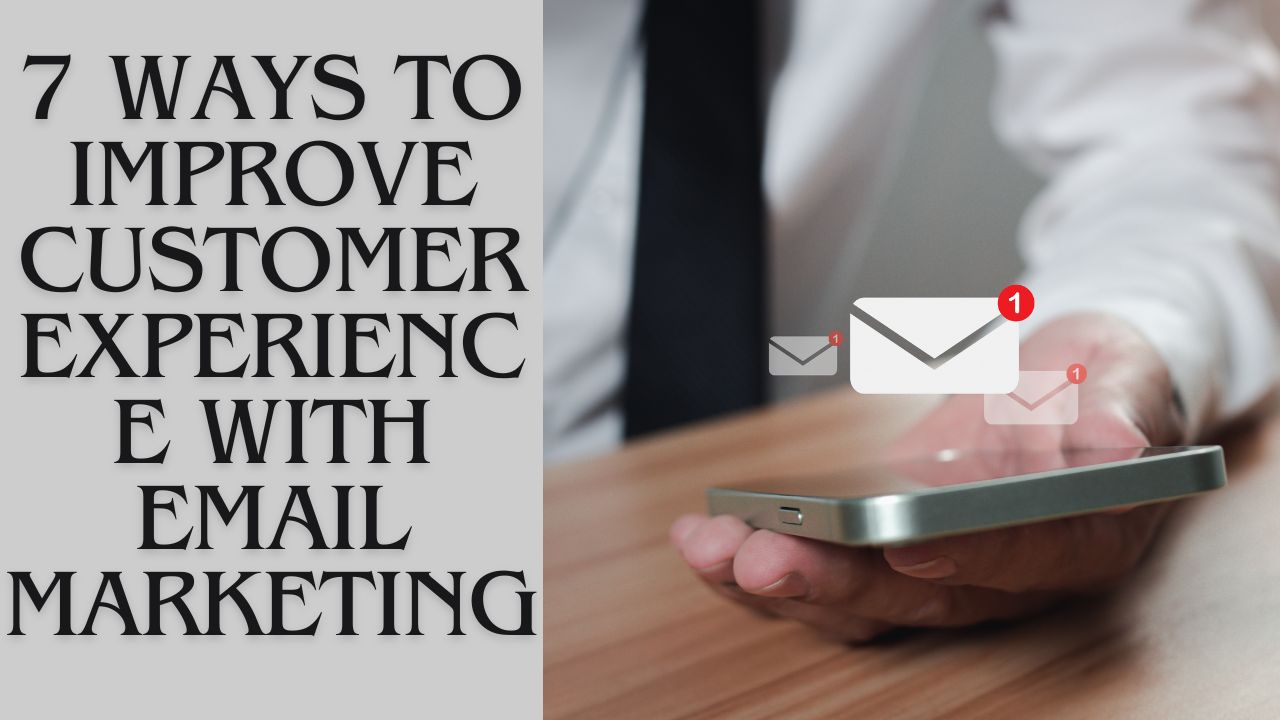Popular Tools by VOCSO
When writing a blog, you’ll want to write headlines that will capture the reader’s attention. Those headlines can be ranked in search engines like Google, so it’s important to know what works. Because search engines use headlines for their search results and if your headlines are appealing then it will increase the chance to click when someone sees your blog or a website page in search results.
So, what is the best strategy for writing attention-grabbing blog headlines? Unfortunately, there isn’t one. In this article, you’ll learn how to write great headlines for blogs. They’re also some tips and tricks for writing a headline that will gain your reader’s attention.
Table of Contents
Best practices on how to write attention-grabbing blog headline
1. Reflect the actual value of the content
The headline of an article is important because it is the first thing that a reader will see. A headline that is not in sync with the content of the article will cause the reader to lose trust in the author and they will also ignore your blog or website as a good resource.
A headline should be shaped by the content of the article, not the other way around. Trying to cram content into a headline can lead to audience confusion and cost the website future traffic and business. Make sure your blog content justifies the content. To justify your blog headline it’s not meant writing long-form content. You just need to think about what problem you’re going to solve for your niche audiences. For example, if you’re going to write on a topic like “Content Marketing Best Practices – A Complete Guide for 2022” and if you’re explaining such topics with little pieces of information or a word count of 700-1000 you’re not going to rank on such topic because people are already read good resources and they want more valuable information when they visit to read your blog.
Secondly, Google is not going to give your ranking for your incomplete information blog page. So I would recommend before writing on any topic check out your organic competitor’s pages and think about what additional value you’re going to give your audiences. Now you know how you understand how important to get ensured that a headline matches the content of an article.
By focusing on these things, the author will be able to create a headline that accurately reflects the content of the article.
2. Use words and phrases that resonate with your audience
Make a list of compelling phrases and words to use in your headlines.
Assume you are a running shoe manufacturer and you receive an online review that states, “These shoes are very comfortable to wear, but the arch support during long runs was lacking.”
The title of your article can directly address the (literal) pain point of arch support. If you were writing a “Best of” listicle, your headline would be “10 best men’s arch support running shoes”.
Alternatively, you could be more general and write Why arch support is important for long-distance runners.
Because you are using their tone and phrasing, this activity ensures that your audience is heard through your headlines.
As a general rule of thumb, your headline should make the reader feel heard and understood. You don’t want your headline to feel like a sales pitch for how great you are.
Your audience will not want to listen, and your article will suffer as a result.
Of course, there are always exceptions to the rule, and you may find that a more sales-oriented headline performs better for your particular article. However, in general, it’s best to err on the side of making your reader feel understood.
To that end, when you are conducting keyword research for your article, be sure to keep an eye on both traffic and performance.
This will help you to ensure that you are on the right track with your headline. If you see that a certain keyword is getting a lot of traffic but not performing well in terms of conversion or engagement, it may be time to rethink your headline.
3. Put questions
You’re right that the structure of a headline can have a significant impact on the appeal of an article. And you’re also right that consumers want to be heard and understood.
One of the best ways to accomplish both of those goals is to speak in the language of your audience. If you’re writing for a general audience, that means using simple, clear language that everyone can understand.
But if you’re writing for a more specific audience, you can use jargon and industry-specific terms to show that you understand their needs and concerns.
Another great way to appeal to your audience is to include a question in your headline. This prompts the reader to reflect on the question and try to answer it in their mind.
This creates a sense of engagement and curiosity that will encourage them to read the article.
4. Use numbers
When creating a blog headline, don’t be afraid to use a number. Headlines with numbers are more effective than those without.
Why is this the case?
Numbers serve as a psychological trigger to get the reader to think. They help to quantify the content, allowing the reader to process how long it will take to consume, and what will be involved and scale the information before even clicking into the article.
Even though time was not mentioned, you determined how long something could take based on the number of steps listed in the article headline.
Numbers in your headlines stand out visually from the standard text, drawing the audience’s attention even more.
So, if you want to create an effective blog headline, don’t be afraid to use a number.
5. Play around with visual structure
When it comes to creating headlines for your blog content, using a two-part structure can be a great way to add some dynamism, tease the contents of the article, and provide additional context.
These types of headlines can also be very effective in catching the reader’s attention since they offer additional context about what to expect in the article while also looking different from most other headlines.
If you’re looking to add some extra punch to your headlines, using a two-part structure with a colon, parentheses, or brackets is worth considering.
With a two-part headline, you can grab the reader’s attention and give them a taste of what the article is about. For example, a headline like “5 Tips for a Successful Blog: From Choosing a Topic to Writing Great Content” provides both context and intrigue and is likely to make people want to click to read more.
Just make sure that the two parts of your headline are relevant to each other, or you risk confusing or frustrating your readers.
6. Be concise and to the point
A good headline is specific and brief. The “character sweet spot” for your article headline should be met. This is usually between 50 and 70 characters, but it can vary depending on the platform.
For example, on LinkedIn, the recommended length for an article headline is 40-49 characters, which feels so short but performs exceptionally well.
While it will not always penalize your search performance if your title is longer than 70 characters, your title will be cut off by the Google search engine results page (SERP) — especially on mobile. That means the reader won’t be able to bask in the glory of your entire blog headline.
7. Optimize for keywords and search performance
To optimize your headlines for search performance, it is critical to be specific with your most valuable keywords. This requires knowing what keywords you want to rank for with the article.
Keyword research should start with your intention and what your customers or target audience are saying about it. For example, if you are buying a bed, you might start by searching “Best beds.” However, the results will be so vast that it will be difficult to find what you are looking for.
To narrow your search, you can be more specific with your keywords. For example, you might search for “best beds for small bedroom” This will help you find the specific results you are looking for and optimize your headlines for search performance.
Intention-based keyword research is a powerful tool that can help you narrow your search and find the best keywords for your needs. By focusing on intention, you can identify the specific keywords or phrases that your target audience is using. This can make a big difference in the results you get, and help you find the best dog beds for your needs.
8. Demonstrate your value
When it comes to writing an article about your business, you need to know that the title will get people’s attention pretty quickly. So what should you look for when considering a title? First of all, it has to be catchy.
It also needs to tell readers something. If you talk about a new product that is out on the market, one thing you could do would be to mention how your service can solve reviews on any type of website – blogs and social media sites, for example.
Another tip is to tell people what they can expect from reading the article. Does it cover a certain topic in depth or give useful advice? Give them a taste of what they can expect when they click on your article headline!
9. Breed distrust
There’s something about learning that we’re being deceived or manipulated that just rubs us the wrong way. We humans can be a cynical lot, and we’ll often jump at the chance to read about how we’re being manipulated, deceived, or cheated. It makes us feel better, in a way, to know that we’re not the only ones being taken advantage of. And while it’s not pleasant to think about, it’s also a reminder that we need to be careful and aware of the ways we might be being duped.
Examples of titles
- 4 Lies Your Car Dealer Will Tell You
- Is Your Doctor Telling the Truth About Prescriptions for Your Children?
- Sunburn is bad, but sunscreen is even worse.
10. Readers should be EXCITED to read your article
You’ve written a great article. It’s well researched, informative, and helpful. But there’s one problem: your title is boring. If your title doesn’t grab the reader’s attention and make them want to click, they’ll never even get to your great content.
Your title is your first and best chance to make a good impression on potential readers. It’s your job to entice them to read your article. And if your title is dull and dry, no one will read it. You must bring your A-game to push your article against the heavy hitters to get a fraction of their traffic.
The big hitters we’re discussing here don’t require much in their title. But your title will be everything to you. So make it count.
Write a title that’s interesting, attention-grabbing, and relevant to your article. If you do, you’ll stand a much better chance of getting clicked, read, and shared.
Remember the 5 W
‘You understand your target audience better than anyone else. You understand what your audience desires and what they expect from you. You must comprehend their goals as well as their concerns. Use this information to craft a headline that resonates with your target audience. You use strategic headlines to capitalize on your audience’s desires and fears. For example, ten ways to create amazing content
Remember the 5 Ws:
« Who
« What
« When
« Where
« Why
These are interesting. The letter W is interrogative and can be used to elicit information. When you use such words in your title, your reader knows exactly what to expect from your article and the information they will obtain.
13. Address readers in 2nd person
When you address your readers in the second person, it gives them the impression that you are speaking directly to them.
This can be a powerful way to capture their attention and engage them in your message. By speaking to them directly, you can create a connection with your readers and deliver your message in a way that is more impactful.
When you use the second person’s point of view, you are directly addressing the reader, using “you” as the pronoun.
This approach can be very effective in getting the reader’s attention and engaging them in your message. When you speak directly to the reader, you create a connection with them that can make your message more powerful.
14. Brainstorm lots of different headlines
According to some experts, writers should spend 80 percent of their time writing headlines – put your effort into the most important element. Make time to come up with a healthy smorgasbord of headlines. Try writing at least ten headlines, each with a different structure or verb and adjective variations, as a headline writing exercise. Determine which feels the most appealing and solicit feedback from coworkers.
To get those catchy headline juices flowing, you should sit down and brainstorm. You may not reach the sweet spot of headline writing until you’ve written a few headlines; chances are, the first headline you come up with will never be your best.
15. Utilize a unique rationale
To avoid wasting time on content, we need to give people a compelling reason to click, read, and, most importantly, share your content. Businesses with blogs receive twice as much email traffic as those without.
With nearly 60 percent of people sharing content without first reading it, it’s crucial that our headlines appeal to those who will.
By including rationales such as tips, reasons, lessons, tricks, ideas, ways, principles, facts, secrets, and strategies in our headlines, we can increase the likelihood that people will read and share our content.
16. Use headlines generator for blog topics idea
There are a number of headline generators available online that can make it simple to create attention-grabbing headlines. These headlines can be used to attract website visitors, increase social media engagement, raise brand awareness, and much more.
By using a headline generator, you can create headlines that are both effective and appealing, making it easier to get the results you desire.
You can try a free blog title generator tool by VOCSO for generating eye-catching headlines for your blog. Create eye-catching, clickable blog titles to cut through the clutter and drive traffic to your articles.
17. Create an eye-catching, unique title
There’s no question that a great headline can make a big impact. After all, the headline is often the first thing people see when they come across a piece of content. And in a world where we’re constantly bombarded with content, a captivating headline can be the difference between someone taking the time to read your article or moving on to the next thing.
But what makes a great headline? While there’s no surefire formula, there are a few things that great headlines have in common. First, they’re often strange or unexpected. This can pique people’s curiosity and make them want to learn more. Second, they’re usually clear and to the point.
This ensures that readers know what they’re going to get from the article before they even start reading. Finding the perfect balance between these two elements can be tricky, but it’s worth it.
After all, a great headline is the first step to getting people to engage with your content.
When you’re trying to get someone to do something, whether it’s read your latest blog post or buy your new product, it’s important to instill a sense of urgency. If you don’t, your readers are likely to put it off until later or even forget about it entirely. The goal is to make them want to click on your headline right away.
A sense of urgency is not just important in content marketing, but in life in general. If you’re always putting things off until tomorrow or next year, you’re not going to get very far. Everyone needs that driving force that will motivate them to do something right now. That’s what using urgency in your headline writing does.
So next time you’re trying to get someone to take action, remember to make it urgent. It could be the difference between them doing it now or never.
18. Convey a sense of urgency: Don’t miss out!
When you’re trying to get someone to do something, whether it’s read your latest blog post or buy your new product, it’s important to instill a sense of urgency. If you don’t, your readers are likely to put it off until later or even forget about it entirely. The goal is to make them want to click on your headline right away.
A sense of urgency is not just important in content marketing, but in life in general. If you’re always putting things off until tomorrow or next year, you’re not going to get very far. Everyone needs that driving force that will motivate them to do something right now. That’s what using urgency in your headline writing does.
So next time you’re trying to get someone to take action, remember to make it urgent. It could be the difference between them doing it now or never.
19. Flag the reader in your headlines
The “flagging technique” is a powerful method for writing headlines for both copy and blog posts. One of the fundamental techniques involves addressing the readers as “you.” On a personal level, the word “you” connects with and captivates your readers.
Because the majority of your competitors use content to reach and attract customers, you must communicate with your prospects on their level, whether you are a B2B or B2C marketer. Aside from that, address your readers and create headlines that are tailored to them. This method has worked for me several times.
For example, if you are writing a blog post about the benefits of a certain product, you could use the headline “You Will Love This Product Because of These Five Benefits.” This headline directly speaks to the reader and tells them what they will get out of the blog post.
In addition to using the word “you” in headlines, another way to connect with readers is to use pronouns such as “we” and “us.” This immediately creates a sense of community and belonging, which is essential in today’s competitive marketplace.
Conclusion
Though creating a headline requires some thought, it is by no means rocket science!
There is no definitive format for writing the perfect headline, but with these guidelines, you will be well on your way. Set aside some time to find your perfect headline. Concentrate on developing good headline writing techniques, and keep writing.
Finally, experimentation is key, so try to experiment as much as possible. Try out different titles, see which one works best, and then use it. Soon, these tests will assist you in determining the best headline for your target audience.
A headline can make or break your article, so give it the time and attention it deserves!


















